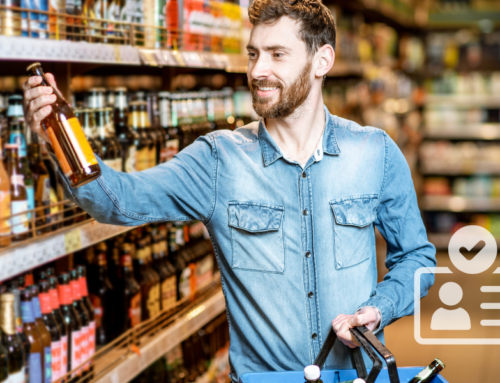Author
Tommy Chapman
Share
Retail jargon buster – part 1
Do you know your show-rooming from your drop-shipping or your m-commerce from your social selling?
In the ever-changing world of retail technology, keeping up to date with the jargon in today’s retail sector can be quite a challenge. New retail terms pop up all the time, so to help you keep pace with the changing technology and the terminology, we’ve compiled a list of just some of the latest retail terms.
Add on Sale – The sale of additional goods to a shopper, in a retail store, this is generally a relevant product that is suggested by the sales assistant at check out and is sometimes known as upselling.
Anchor Store – Generally, a large store or supermarket used to provide a major point of interest for a shopping centre. Usually a well know chain store that is popular with consumers, this type of store can entice customer to visit a shopping centre and possibly continue to shop at the smaller stores within the centre.
Application Service Provider (ASP) – A business that provides computer-based services to customers over a network such as providing EPoS software over a secured broadband connection.
Average Transaction Value (ATV) – The average amount spent by shoppers in one transaction. This is calculated by dividing the total value of all transactions by the number of transactions or sales. It can be calculated on a daily, monthly or annual basis and retailers often set a goal to increase their ATV.
Augmented Reality (AR) – A live view of a real world environment that is augmented through the use of computer technology to add sensory elements such as sound, imagery, videos or GPS data. Many retailers are using Augmented Reality as a way of improving in-store or general brand experience.
Beacons – Powered by BLE (Bluetooth Low Energy) technology, beacons are devices that can transmit messages to other Bluetooth-enabled gizmos, such as smartphones, tablets, and smartwatches. More important, beacons have the capability to recognise other devices based on their location or previous interactions. This enables retailers to send tailored notifications to shoppers depending on where they are in the store or what type of customer they are.
Beacons can also be used for in-store analytics purposes, most come with tools for measuring foot traffic, dwell time and more, enabling retailers to gather data and further get to know their customers and their store.
Big Box Store – A large rectangular or square shaped retail store. It is typically characterised by a large amount of floor space and a wide array of products for sale across different categories. Big box stores generally offer products at lower prices. This is because products are sold in high volume, therefore they are able to lower their profit margin, which results in competitively priced products.
Black Friday – The name given to the shopping day after Thanksgiving in the US, which is typically the last Thursday in November. On Black Friday, many retailers run special deals to entice shoppers and is often seen as a kick starter for people to start their Christmas shopping. It has become increasingly popular in the UK in the last few years.
Brick and Click – Also known as multichannel or omnichannel retailing, this refers to retailers which integrate their bricks and mortar stock with their ecommerce website. Allowing retailers to offer shoppers with convenient services from their website and integrate them within their stores, including click and collect, reserve and collect and online returns in store.
Bricks and Mortar – Describes a retailer’s physical store or stores. Read our recent article on Savvy Bricks and Mortar Retailing
Cashwrap – This is the main checkout area of a retail store, this is where shoppers head to when they’re ready to pay for their items. It’s where retailers set up their EPoS system and ring up sales. Most cashwraps have shelves containing merchandise that shoppers can pick up on their way out.
Click and Collect – A service which allows shoppers to purchase an item on a retailers website and the option to collect it in store, this offers them the convenience of picking up their item when and where they want. This service is offered by retailers with an integrated EPoS and Ecommerce system.
Cloud Computing – Internet based computing, whereby shared resources, software and information are provided to computers and devices on demand. This provides retailers with EPoS software over a secure broadband connection.
Contactless Payments – A convenient technology system used to allow shoppers pay for items contactless with a credit or debit card, keyfob, mobile phone or other mobile device. Contactless payments use either radio-frequency identification (RFID) or near field communication (NFC).
CRM – Refers to Customer Relationship Management, a business strategy designed to reduce costs and increase profitability by strengthening customer loyalty.
Cross Merchandising – This is when retailers display products from different categories together in store in order to encourage shoppers to buy several products rather than one. This is used for products that can be logically linked to one another and is a common tactic used to increase sales.
Cross Selling – This is when retailers sell an additional product or service to an existing customer. This is often done via offers in-store or online. It is common practice online to cross sell by showcasing additional products that other customers also bought when buying the current product in the basket.
Cyber Monday – The name given to the first Monday after Thanksgiving in the US, much like Black Friday where retailers run special deals but it is focused on online retail.
Dead Stock – Dead stock describes products that were not sold before being removed from sale, usually because they were out of date. Dead stock is often warehoused and sold through outlet stores, but it can also be offered for sale retaining its original packaging and tags.
Drop Basket or Basket Abandonment – When a visitor to an e-commerce site adds goods to their virtual basket but exits without completing the transaction. Retailers who can track this on their e-commerce site, send reminder emails to shoppers who abandon their basket in an attempt to prompt them to complete the checkout process.
Drop Shipping – This is a fulfilment model that allows retailers to buy products individually from a supplier and have them shipped directly to the customer. This offers retailers many benefits including lower stock holding and the ability to offer a wider product selection as you are not having to pre-purchase products you sell.
E-commerce – Refers to electronic commerce, allowing people to buy and sell products over the internet, sometimes also referred to as E-tailing.
EPoS – Stands for electronic point of sale, a computer based system used in retail stores to process payments, record sales, keep an inventory of stock, collect customer information and more.
E-Receipts – A transaction receipt that is sent electronically via email to a customer to save paper wastage and provide a more convenient, longer lasting proof of purchase.
First In, First Out (FIFO) – Stands for first-in, first-out, this means that the oldest inventory items are shipped, distributed or sold first.
Flash Sales – Sale events that take place for a limited time period, anything from a few hours on one day to a couple of days.
Forecasting – In retail, forecasting anticipates future purchasing of shoppers by evaluating previous revenue and consumer behaviour over a previous period to check for patterns and use this to develop forecasts for the upcoming months. The data can be adjusted for seasonal trends and following the analysis, a plan for ordering and stocking products is produced. This process is then repeated for each period.
High Speed Retail – is all about making the customer’s shopping experience go much quicker. Examples include drive-throughs, pop-up stores, mobile businesses or any retailer that implements urgent promotions or limited time sales.
The use of mobile PoS systems is extremely common in High Speed Retail, this is because aside from being fast, lightweight and easy to set up, mobile PoS solutions run in the Cloud and can update every aspect of the business, (inventory, CRM, payments, etc.) in real-time. Thus enabling retailers to stay up to date at all times. Most mobile PoS systems also come with convenient capabilities such as emailing receipts and processing mobile payments, making it easy to conduct business much faster.
Inventory or Stock Management – The monitoring and control of goods and stock so that new stock can be ordered as required and that the right numbers and quantities are made available at all times.
Inventory Turnover or Stock Turnover – This is a measure of the number of times inventory is sold in a time period (typically a year). The equation for inventory turnover equals the cost of goods sold divided by the average inventory.
Keystone Pricing – Selling an item at twice the wholesale price to produce a gross margin that is 100% of the cost price.
Leader Pricing – Selling selected products for less than their normal profits margins in order to introduce a new brand or generate consumer interest in a product or family of products.
Loss Leader – Products or goods promoted and sold less than their cost price with the aim of generating footfall and new customers. The assumption being that once the customer has tried the goods they will buy it again, as well as purchase other goods whilst visiting the store.
Loss Prevention – Putting policies and procedures in place in a retail environment to prevent the loss of stock through theft, fraud, waste or misconduct.
Key Terms
Share:
Sign up now for news and special offers!
Join our Newsletter
*We are collecting your email information in order to add you to our newsletter recipient list. You can unsubscribe from our communications at any time. You can do this by contacting us or by clicking the unsubscribe button on any of our communications with you.
You can find more information about the details we hold about you and the way we use them in our privacy policy, and you can access this here or we can send you a copy.




